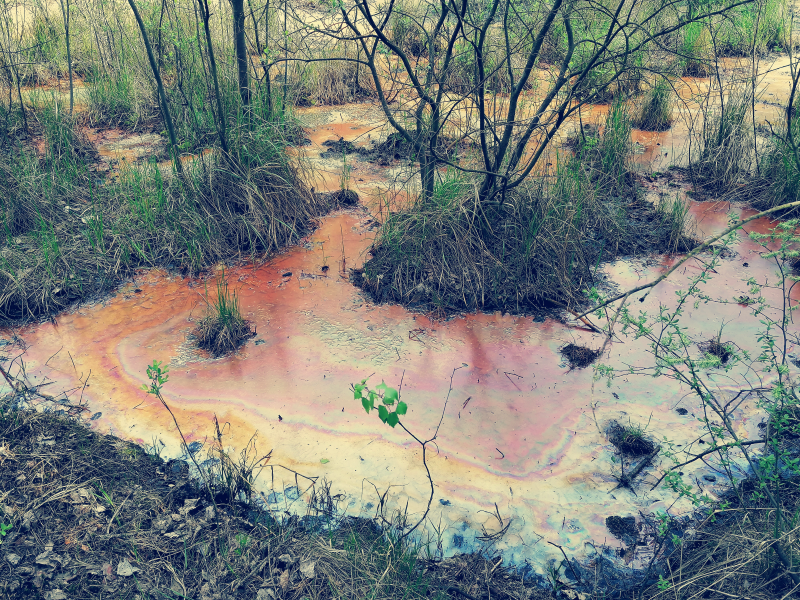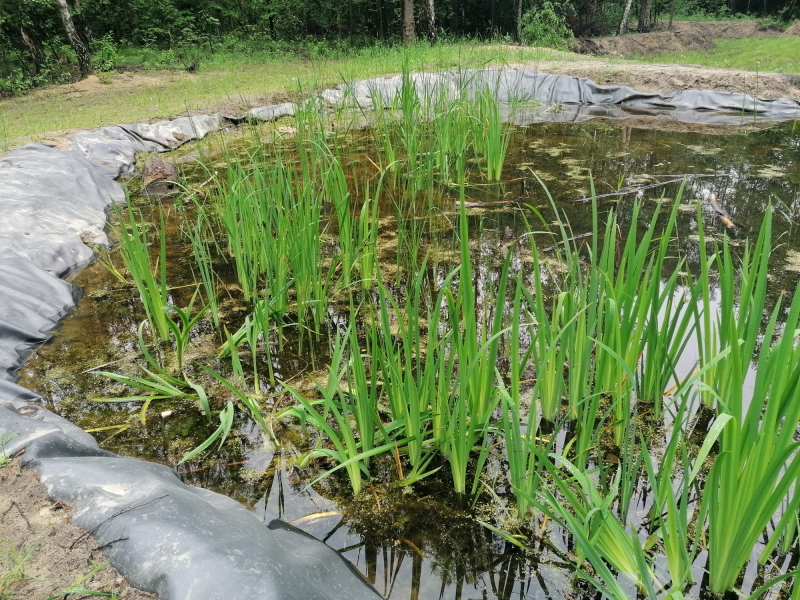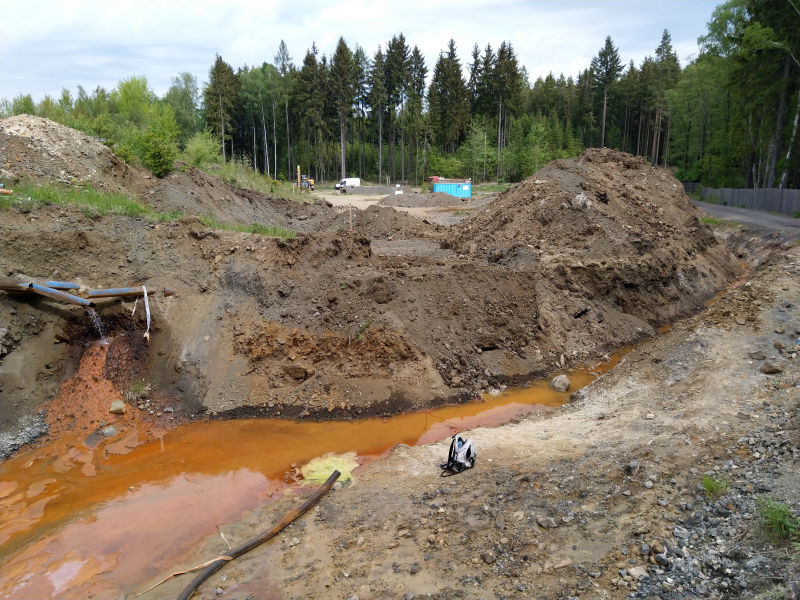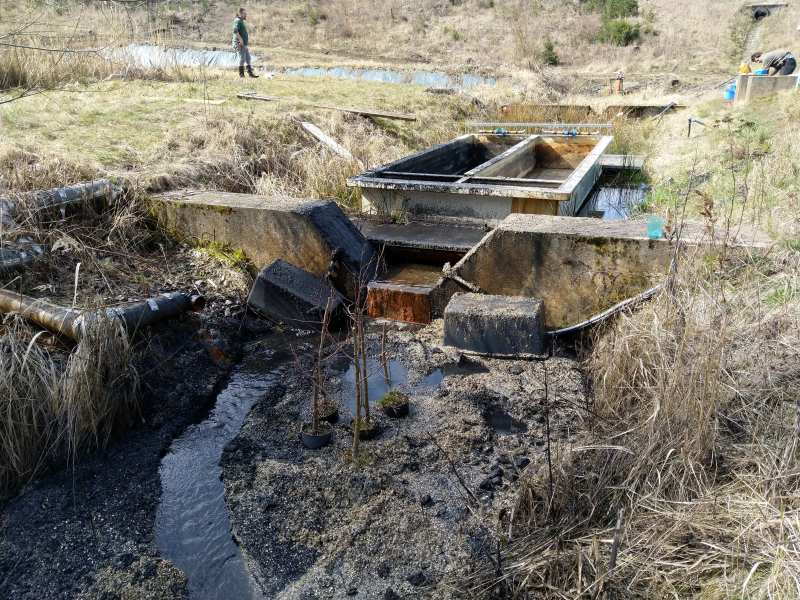Wetland+ technology helps with environmental burden at Jaworzno landfill
20. 6. 2023
CXI experts have deployed Wetland+ technology at yet another site with an environmental burden. The landfill in Jaworzno, Poland, is estimated to contain nearly 200,000 tonnes of hazardous waste.

The Wetland+ technology is installed at the former landfill of lindane and other pesticide substances in Hájko near Karlovy Vary. Here, with an efficiency of up to 97%, it purifies the water in the stream that flows out of the landfill. The unique Wetland+ technology, which can remove life-threatening chlorinated substances from water, has now been installed by a team from CXI TUL led by Miroslav Černík in Jaworzno, Poland. It is working to perfection and other European sites with similar environmental burdens are interested in the innovation.
"Heavily contaminated water flowing from the old landfill flows through reactive and sorption fields containing iron, peat or wood chips. The final treatment before the water is released into the Wavolnica River is provided by plants in an artificially created wetland," says Miroslav Černík, head of the international implementation team of the LIFEPOPWAT project and director of the Institute for Nanomaterials, Advanced Technologies and Innovations of the Technical University of Liberec (CXI).

The pilot project of Wetland+ technology, which was created within the framework of the European LIFEPOPWAT project, was launched by CXI in cooperation with the state enterprise DIAMO and Photon Water Technology s.r.o., Liberec, two years ago on the spoil heap of the old quarry in Hájek in the Karlovy Vary region. The spoil heap contains five thousand tonnes of lindane and waste substances from its production at the Neratovice Spolana under the previous regime. The system of reactive and sorption fields there covers an area of 0.75 hectares, was completed and started up in September 2021 and now purifies water with an efficiency of up to 97%.
"Jaworzno is smaller in size compared to Hájko, but the amount of stored substances exceeds it many times over. There are over 37,000 tonnes of lindane and tens of thousands of tonnes of other waste from chemical production that is toxic to humans and other organisms. In total, there are 195 000 tonnes of toxic waste, which represents more than half a million cubic metres of contaminated soil. These are, among other things, substances from the list of persistent organic pollutants listed in the Stockholm Convention signed in 2001. These substances have not been allowed to be used since then, but there are already hundreds of thousands of tonnes of them in the environment," says Professor Černík.

The Wetland+ technology dispenses with the construction of treatment plant buildings, chemicals and other environmental burdens, and does not disturb the landscape, as the reactive and sorption fields with iron and peat can be hidden at ground level, as we see at the site in Hájek in the Karlovy Vary region. On the contrary, it contributes to biodiversity, as it will add a wetland planted with wetland crops to the landscape. It is also an almost maintenance-free technology that can operate for years without further human intervention. Only once every few years is it necessary to refill the iron in the tanks.
"In Jaworzno, our team, again in cooperation with Photon Water Technology, has so far implemented only an experimental device with a flow rate of 0.15 m3/hr. We are now in a test mode where we are slowly increasing the concentration of pesticides in the input water. With the efficiency we are now at about 85% in Jaworzno, but in time we expect the same efficiency as in Hájek in Karlovy Vary," says Miroslav Černík.
The LIFEPOPWAT project, supported by the European LIFE project, has a budget of 80 million crowns, more than half of which is covered by European funds, 17% of the costs of the Czech participants were covered by the Ministry of the Environment, the Liberec Region contributed 240,000 crowns to the preparation of the project and the rest (27%) is covered by the consortium participants, which are, in addition to CXI TUL, the state enterprise DIAMO, Photon Water Technology s.r.o, Liberec, the Polish Main Mining Institute (Głowny instytut górnictwa), SERPOL from France, the Danish University of Aarhus and the City of Jaworzno.

„Projekt LIFEPOPWAT poskytuje důležité informace o možnosti využití filtračních systémů a mokřadu k úpravě znečištěných vod v Jaworznu. V případě problému, kterým se zabýváme v Jaworznu, je to zásadní vzhledem k umístění znečištěných míst a dlouholetému zanedbávání souvisejícímu se špatnými a neúčinnými právními předpisy v Polsku, které mají za následek značné rozšíření znečištění,“ říká Marcin Tosza, zástupce Městského úřadu v Jaworznu a člen týmu LIFEPOPWAT, který se již mnoho let zabývá problémem nebezpečného odpadu nahromaděného v údolí řeky Wąwolnica v Jaworznu.
„Oblast bývalého chemického závodu Organika-Azot patří mezi zdroje průmyslového znečištění, tzv. průmyslová HOT SPOTs, jejichž negativní vliv se neomezuje jen na danou lokalitu, ale má přeshraniční rozměr. Silně znečištěné vody vytékající ze skládky se totiž vlévají do řeky Wąwolnica a odtékají dál z tohoto území a jsou tak obzvláště nebezpečné i pro Baltské moře,“ dodává Tosza.

"The LIFEPOPWAT project provides important information on the possibility of using filtration systems and wetlands to treat polluted water in Jaworzno. In the case of the problem we are dealing with in Jaworzno, this is crucial due to the location of the polluted sites and the long-standing neglect related to poor and ineffective legislation in Poland, which has resulted in a significant spread of pollution," says Marcin Tosza, a representative of the Jaworzno City Council and a member of the LIFEPOPWAT team that has been dealing with the problem of hazardous waste accumulated in the Wąwolnica River valley in Jaworzno for many years.
"The area of the former chemical plant Organika-Azot is one of the sources of industrial pollution, the so-called industrial HOT SPOTs, whose negative impact is not limited to the given location, but has a cross-border dimension. In fact, the heavily polluted water flowing from the landfill site flows into the Wąwolnica River and out of the area, making it particularly dangerous for the Baltic Sea," adds Tosza.
Radek Pirkl, tiskový mluvčí Technické univerzity v Liberci




.png)
.jpeg)
.png)
.jpeg)
.png)
.jpeg)
.png)


.png)